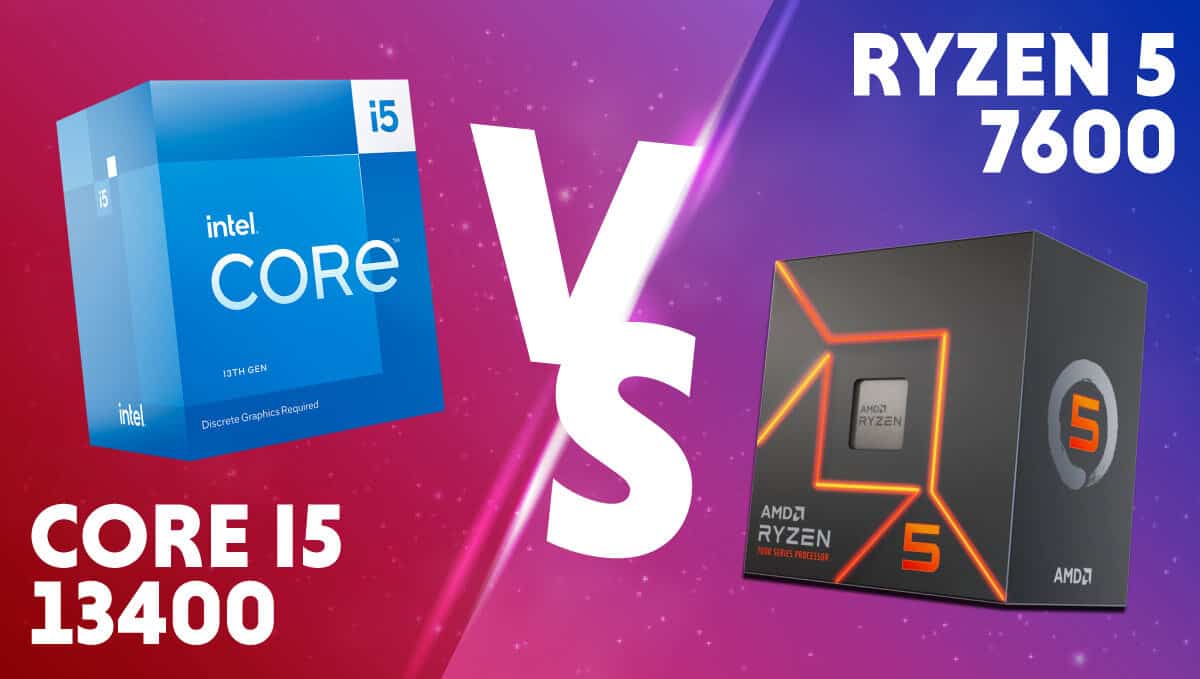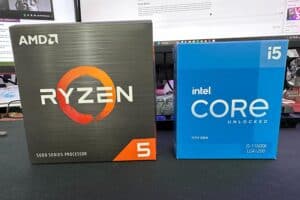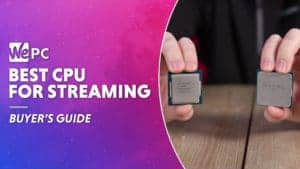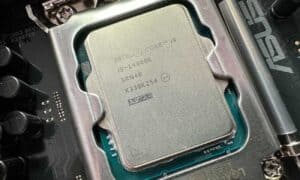Intel Core i5-13400 vs Ryzen 5 7600
Intel Core i5-13400 vs Ryzen 5 7600, which is better?

WePC is reader-supported. When you buy through links on our site, we may earn an affiliate commission. Prices subject to change. Learn more
The Intel Core i5-13400 and Ryzen 5 7600 are both young Q1 2023 processors that just hit the market. They are newer additions to the Intel 13th gen and Ryzen 7000 series processors that were released in late 2022. Here’s our Intel Core i5-13400 vs Ryzen 5 7600 article.
Now read: Is the Intel Core i5-13400 good for gaming?
As things stand currently, both CPUs compete for the same market. Today, we’re comparing the two in detail to find out which is better. This is Core i5-13400 vs Ryzen 5 7600.
Intel Core i5-13400 vs Ryzen 5 7600: Processor specifications
Before anything else, let’s lay a foundation for the comparison by going over the official specs for both processors.
Intel Core i5-13400
- 10 Cores
- 6 Performance Cores with Hyperthreading (12 Threads)
- 4 Efficiency Cores (4 Threads)
- P.Core Base Clock: 2.5 GHz
- P.Core Boost Clock: 4.6 GHz
- E.Core Base Clock: 1.8 GHz
- E.Core Boost Clock: 3.3 GHz
- Default TDP: 65 Watts
- Maximum TDP: 154 Watts
These are solid specs overall, making the i5-13400 a good gaming processor that has decent multitasking ability as well.
AMD Ryzen 5 7600
- Architecture: Zen 4
- Core count: 6
- Thread count: 12
- Base speed: 3.8GHz
- Boost speed: 5.1GHz
- Cache: 32MB
- TDP 65W
What’s particularly remarkable here is the processor’s high boost clock and low power draw. Of course, we’ll be going over how these specs compare to the 13400’s in our comparison.
You can find our review of the Ryzen 5 7600 here.
Intel Core i5-13400 vs Ryzen 5 7600: Specification comparison
We’ll be highlighting the differences between the two processors here.
CPU architecture
The Intel core i5-13400 is based on Intel’s 13th gen hybrid core architecture. This architecture is also famously known as the LITTLE.big architecture and was introduced to us with 12th gen Alder Lake processors.
The hybrid core architecture essentially constitutes the usage of two different types of cores: performance and efficiency.
The performance cores are physically larger cores with high clock speeds, and hyperthreading enabled. They carry out most of the heavy-duty processing but also soak up a lot of power.
The efficiency cores are physically much smaller and run at lower clock speeds but are incredibly power efficient. The processor juggles tasks between the two core types depending on the degree of performance that’s required.
The Ryzen 5 7600 features AMD’s Zen 4 architecture. No efficiency cores are used here. There’s not much that stands out about Zen 4 other than the fact that it has a 14% higher IPC than Zen 3. In other words, all Zen 4 processors natively receive a nice boost to their processing speeds just by being on the newer platform.
Core Clock
A CPU processes instructions one at a time. It does so by way of the fetch-execute cycle, where an instruction is fetched from memory, decoded, and then executed. This repeats billions of times per second to make for a seamless user experience.
How fast a processor core can execute instructions is determined by its clock speed. Here, we see that the Ryzen 5 7600 has a maximum clock speed of 5.1GHz compared to the i5-13400’s 4.6GHz max clock speed.
That’s a noteworthy lead of 500MHz and does translate to a noticeable improvement in single-core performance.
Having a higher core clock is particularly useful in gaming, an activity that doesn’t utilize all that many cores. With that in mind, the Ryzen 5 7600 is a better gaming processor and will offer you more FPS than the 13400 in most games.
Core/thread count
A CPU chip consists of multiple smaller microprocessors, in other words, cores. The more cores, the more processes can be dealt with simultaneously. And the bulky singular tasks that can be broken down into smaller processes can be completed faster.
The i5-13400 has 10 cores and 16 threads. The 7600, by comparison, has only 6 cores and 12 threads.
The Ryzen’s 12 threads are plenty for gaming, but it will struggle to keep up in much multicore-heavy workloads, such as streaming, data analysis, file transfer, content creation, video editing, 3D rendering, and more.
The i5-13400’s extra cores and threads make it the better productivity processor.
TDP
As mentioned earlier, what stands out most about the Ryzen 5 7600 is its low 65-watt TDP. The processor is incredibly power-efficient. You won’t need an aftermarket cooler or an over-the-top PSU.
The 13400 has the same 65-watt default TDP but can soak up as much as 154 watts of power until full load, which is more than twice that of the 7600. You’ll need an aftermarket cooler with this CPU and a pretty good one at that.
Here’s some more on CPU coolers.
Intel Core i5-13400 vs Ryzen 5 7600: Price
Of course, specs alone don’t matter much if you don’t consider the price too. The i5-13400 has a $221 MSRP. You could get the F variant for ~$200 if you aren’t interested in the iGPU.
The Ryzen 5 7600 had an MSRP of $229, which is almost the same as the 13400. Since both processors are merely a month old, their current market prices haven’t deviated significantly from the MSRP.
Final thoughts
Both processors are pretty close in terms of performance. And you can get them for about the same price too. Overall, the Ryzen 5 7600 is slightly better for gamers and streamers due to the higher boost clock speed delivering more in-game FPS.
The i5-13400 can game very well, too, though. It’s the better option for those interested in multitasking and productivity work on the side.




